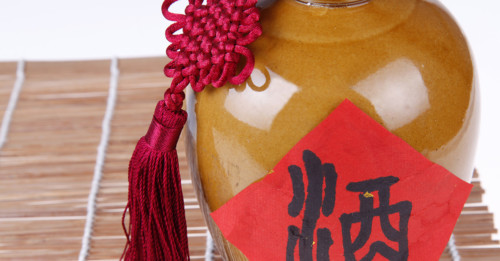Baijiu Essential Info
- Color: Clear, can be slightly darker if aged or flavored
- Region: China
- ABV: 30%-60% ABV
- Aged: Yes, can be aged for many years
- Made from: Any grain, often sorghum, rice, millet, wheat, etc.
- Commercial Examples: Maotai, Wuliangye
- Popular Cocktails: Often served neat, at room temperature in China
You may have never heard of Baijiu, but you will. The 5000 (plus) year-old Chinese liquor is having a—fairly delayed—moment in the U.S. and abroad, and not despite its intensity, but because of it.
The way other spirits are defined and refined, Baijiu is a renegade, distilled for centuries (well, millennia) from things like sorghum, rice, millet, wheat, and corn, fermented in mud pits, and distilled in big earthenware containers. In a spirits industry looking to a craft renaissance, nothing gets more “craft” than this.
If you have had Baijiu, you might know of its rough reputation—there’s a certain melon/cheesy/soy sauce funk to the spirit, but that’s not always there, nor is it always bad (think about the terms we use to describe good Islay Scotch, e.g. Band-Aid, seaweed, iodine). In fact, there are many ways to createBaijiu, and not many laws restricting creativity. The main, consistent theme is potency—an ABV of high 30s to 60%. Hot fire, with flavor. Which is why it’s also often taken with food. And interest has spurred a lot of distilling refinement and creativity. Final spirits may tend to taste like anything from cocoa and earth (a $160 bottle of Kweidrow Moutai) to the dry, hot pepper flavor of the ByeJoe Red ($30).
No Baijiu is (necessarily) created equal, but they’re all generally created potently, so be wary, and drink with food.
